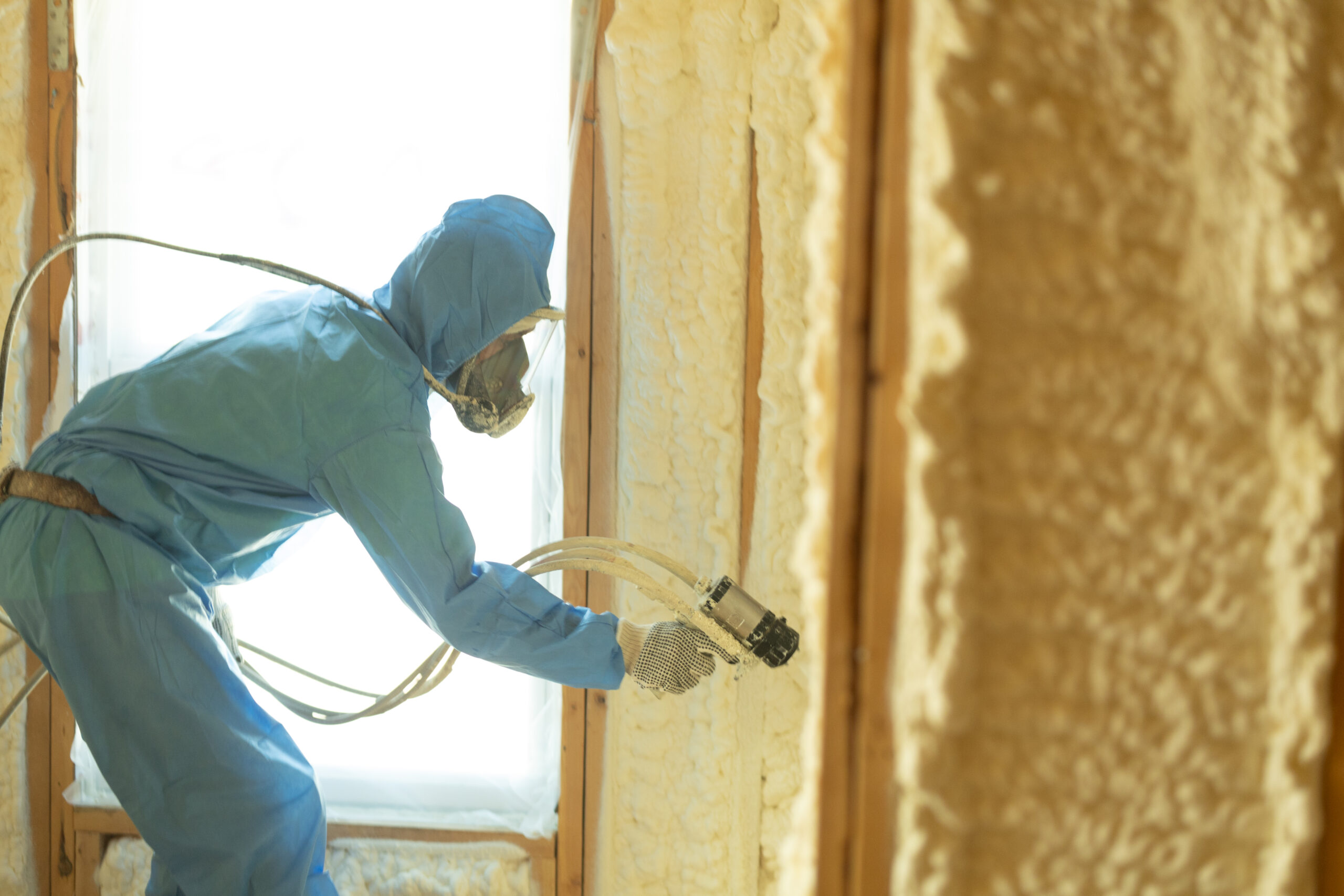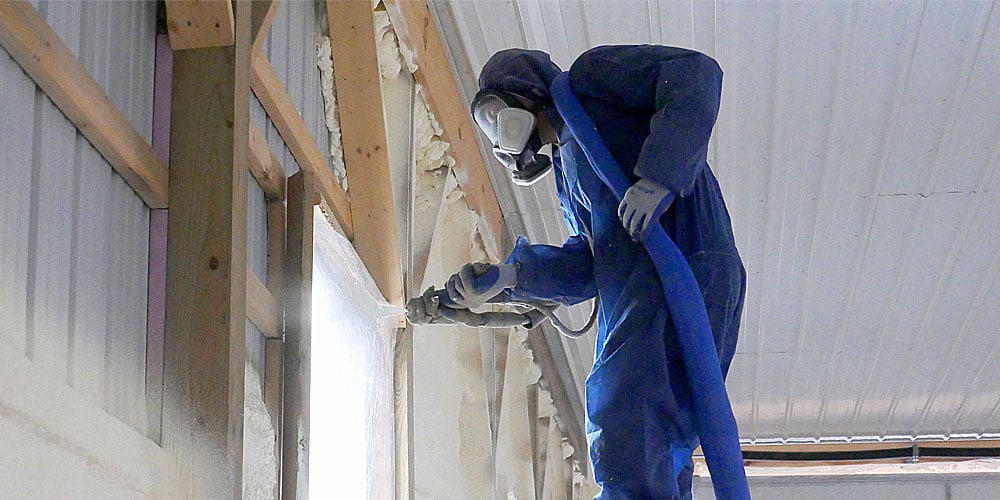Common Myths Concerning Spray Foam: Debunking the Misconceptions
Common Myths Concerning Spray Foam: Debunking the Misconceptions
Blog Article
Spray Foam: The Ultimate Solution for Air Sealing and Insulation
Spray foam insulation has actually arised as a leading option for reliable air securing and thermal insulation, supplying a special mix of properties that establish it apart from traditional techniques. Comprehending the complete range of its benefits, installation procedures, and comparisons with various other insulation kinds is essential for making educated decisions.
What Is Spray Foam?
Spray foam is a versatile insulation material that incorporates the principles of air sealing and thermal resistance to enhance power efficiency in structures. Composed mostly of polyurethane or other similar substances, spray foam is used as a liquid that broadens upon call with surfaces, creating a strong, continuous layer of insulation. This unique building allows it to fill voids, cracks, and gaps that traditional insulation products may forget, giving a remarkable air seal.
There are two primary kinds of spray foam: open-cell and closed-cell. Open-cell spray foam is lighter and extra versatile, offering exceptional noise absorption and a reduced R-value per inch - Spray Foam. On the other hand, closed-cell spray foam is denser, giving a higher R-value, wetness resistance, and added structural honesty to building elements
The application procedure normally includes specific devices, making sure a smooth application that adheres to various substrates, including concrete, steel, and wood. This adaptability makes spray foam appropriate for both new building and constructions and retrofitting existing frameworks. Its capability to produce an impermeable obstacle significantly adds to minimizing power usage and enhancing indoor air high quality, thus making it a recommended choice among home owners and building contractors alike.
Benefits of Spray Foam Insulation
One of one of the most considerable advantages of spray foam insulation is its outstanding capacity to develop a continuous air obstacle, which properly minimizes power loss. Unlike standard insulation products, spray foam broadens to fill spaces and cracks, making certain that air leakage is dramatically minimized. This characteristic not just improves power effectiveness yet also brings about lower utility expenses with time.
In addition, spray foam insulation offers superior thermal resistance, adding to an extra secure indoor setting. Its high R-value per inch permits reliable insulation in constrained areas, making it ideal for attics, walls, and crawl rooms. Additionally, the moisture-resistant residential properties of spray foam help avoid mold and mildew and mold growth, advertising healthier living conditions.
An additional vital advantage of spray foam insulation is its sound-dampening top qualities (Spray Foam). It properly decreases noise transmission in between rooms, creating a quieter and much more comfortable home atmosphere. The longevity of spray foam additionally attracts attention, as it does not sag or work out in time, preserving its performance throughout its lifespan
Just How Spray Foam Functions
Comprehending how spray foam insulation works is vital for valuing its performance in air sealing and thermal resistance. Spray foam insulation includes two key components: isocyanate and polyol material. When these elements are blended, they undertake a chemical reaction that triggers the material to broaden swiftly, creating a thick foam that loads splits, tooth cavities, and gaps.
As the foam broadens, it sticks to surfaces, developing an impermeable seal that considerably reduces air seepage. This characteristic makes spray foam insulation very reliable at stopping drafts and wetness infiltration, which can cause energy loss and damages gradually. Furthermore, the closed-cell variant of spray foam offers premium thermal resistance as a result of its inflexible framework, successfully decreasing heat transfer.
The one-of-a-kind residential or commercial properties of spray foam permit it to comply with uneven surfaces, making sure detailed insurance coverage and a smooth obstacle. Consequently, spray foam insulation not just improves power efficiency however additionally contributes to improved indoor air high quality by reducing the build-up of contaminants and irritants. Inevitably, comprehending the mechanics behind spray foam highlights its role as a superior option for insulation and air sealing in both commercial and residential applications.
Setup Process Introduction

Prior to setup, the area has to be appropriately cleaned up and prepped, ensuring that surface areas are without dirt, debris, and moisture. Due to the fact that contaminants can endanger attachment and general efficiency, this action is essential. Once the area is prepared, the application involves blending both parts of the spray foam, which broadens upon get in touch with and fills spaces efficiently.
Trained professionals ought to carry out the setup, using specific devices to make sure consistent insurance coverage and optimum density. Security precautions, consisting of putting on safety equipment and making certain correct ventilation, are important during this procedure. After application, the foam normally cures swiftly, developing a solid obstacle that enhances energy performance.
Comparing Spray Foam to Typical Insulation
When examining insulation alternatives, spray foam insulation sticks go to this web-site out in contrast to traditional materials such as fiberglass and cellulose. Among the primary benefits of spray foam is its exceptional air securing abilities. Unlike fiberglass and cellulose, which can enable air seepage, spray foam broadens upon application, filling crevices and voids to produce an airtight seal. This causes improved why not check here energy effectiveness, as much less warmed or cooled down air escapes the home, resulting in lower utility expenses.
In addition, spray foam gives a greater R-value per inch than standard insulation types, using more effective thermal resistance in a thinner profile. This particular is particularly useful precede with restricted cavity deepness. Additionally, spray foam is resistant to moisture and mold growth, which can be a substantial interest in cellulose and fiberglass, particularly in damp settings.
Nonetheless, spray foam insulation typically brings a higher upfront cost than its standard equivalents. Homeowners must evaluate this initial financial investment against long-term power cost savings and performance benefits. Ultimately, while both insulation types serve their function, spray foam becomes an advanced remedy for modern insulation needs, particularly in terms of air securing and thermal efficiency.

Conclusion
In recap, spray foam insulation represents an extremely efficient remedy for attaining optimum air sealing and thermal resistance. Its unique residential properties, including wetness resistance and noise dampening, make it appropriate for different applications in both brand-new constructions and retrofitting projects (Spray Foam). The initial costs may be greater contrasted to conventional insulation materials, the lasting advantages, such as significant power financial savings and boosted interior air quality, warrant the financial investment and underscore its worth in modern-day structure techniques.
Spray foam insulation has arised as a leading option for effective air sealing and thermal insulation, using an unique combination of homes that set it apart from conventional techniques.Spray foam is a versatile insulation material that combines the principles of air sealing and thermal resistance to improve power effectiveness in structures.When examining insulation options, spray foam insulation stands out in comparison to traditional materials such as fiberglass and cellulose. Ultimately, while both insulation kinds serve his explanation their purpose, spray foam emerges as an extra advanced service for modern insulation needs, particularly in terms of air sealing and thermal performance.
In recap, spray foam insulation stands for a very efficient solution for attaining optimal air securing and thermal resistance.
Report this page